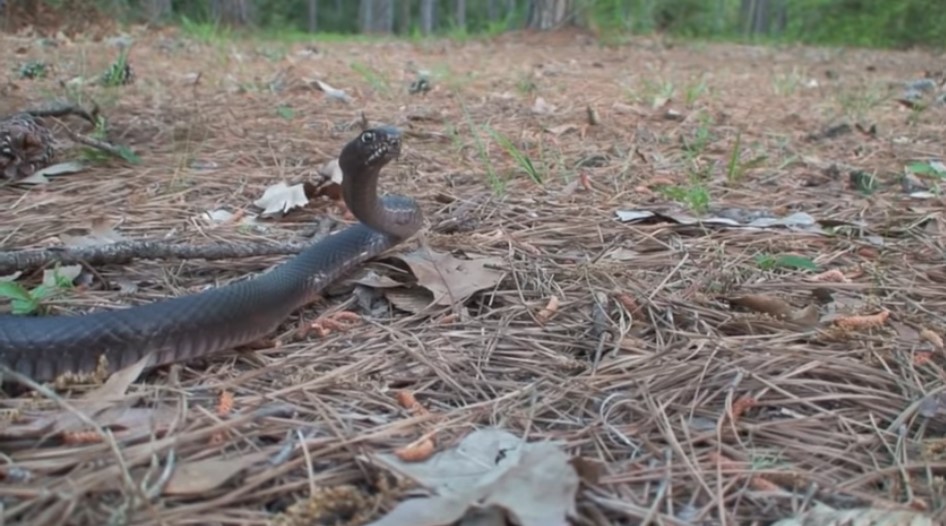
The Coachwhip is a very interesting snake which is named after what it resembles, as the coloration, length and thickness of the snake all help to put people in mind of the whip used by a coach driver. There are many myths that circulate about the Coachwhip (Masticophis Flagellum) including the fact that they can chase down a person and then catch them in their coils, before whipping them to death. In reality the Coachwhip isn't in a position to do any such thing, but with the mysterious name and look of the snake, then it is inevitable that the myths about the species were certain to arise.
Appearance And Diet
The Coachwhip has a very distinctive appearance because of the significant change in scales and coloring that changes down the body of the snake. The front and top of the snake is generally black, with a little bit of variation on the head, while the second half of the body is a tan color which does give the snake the look of a whip. The snake will usually grow to be between four and five feet in length, but there are examples of the snakes growing to be much longer than this.
Although the Coachwhip isn't a venomous snake, it doesn't actually kill its prey by constriction, rather it chooses to catch the prey in its jaws and hold it there, and with larger prey it can actually pin the prey down with the front of the body. The Coachwhip will eat any prey that is small enough to be consumed, but will generally be most likely to catch lizard, mice, rats and even small birds.
Behavior And Habitat
The Coachwhip is a very nervous snake and will look to avoid any contact with humans or other large animals which could be viewed as predators. It is very quick over the ground, and it is this speed that led many people to claim that it could chase down people. The Coachwhip is rarely seen by people, and it is likely to flee at the first sign of a person, but it does have a distinctive shiver when first encountered which is likely to put people in mind of a cracking whip. One distinctive aspect of the snake is that it has particularly good eyesight, and this means that it will sometimes be seen with its head high in the air as it is moving so that it has a good view of its surroundings.
In terms of the habitat, most Coachwhips will be seen in areas where there is ample cover on the floor, although they can also climb trees when they are fleeing predators or hunting for prey. Although they are common in woodlands and other forested areas, they are also very common in sand dunes and other areas with low grasses. The Coachwhip can be found in the southern states across the United States, and throughout Florida apart from the Keys.
Reproduction And Growth Cycle
The Coachwhip will have its mating season in the spring, along with most of the Snakes in the United States, and the female will then lay a clutch of around fifteen eggs at the start of the summer. The young will then hatch in late summer, and are usually between ten and fifteen in length when they hatch. They will often hunt insects and small animals as they grow, and will usually grow quite quickly for the first year.
Although there is limited information about how long the Coachwhip can survive in the wild, there are examples in captivity that have been able to survive for fifteen years or more.
Go back to the pestcontrolsnake.com home page.
Copyright 2021 - pestcontrolsnake.com
Nationwide Snake Control